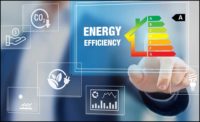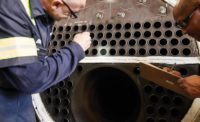Things are changing in the world of venting for condensing boilers. For many years, the choice for venting high-efficiency appliances was limited to AL29-4C stainless steel. AL29-4C was first used in the early 1980s by the power generation industry for condenser tubing and a little later for vent pipe for Category II, III, and IV gas-burning appliances. Now, in addition to AL29-4C, there are other options available, such as 316L stainless and polypropylene vent systems, for the same Category II, III, and IV gas burning appliances. Both of these new options have proven records, as they have been used for 30-plus years in Europe for venting condensing appliances in addition to being used for internal components in appliances by many OEMs. In most cases, 316L was the only option for venting condensing appliances in Europe prior to the arrival of polypropylene.
It is only recently that these new options are being included in appliance manufacturers’ installation instructions in addition to being identified in project specifications.
316L
The 316L option is a great, low-cost alternative to AL29-4C as it is readily available almost everywhere AL29-4C venting is sold. 316L is also a great option for multi-fuel appliances capable of burning either gas or oil. 316L has been used as the default material in all-fuel applications, chimney relining, and Class A chimneys due to its excellent corrosion-resistance in a wide variety of environments. 316L has earned its reputation based on extensive usage in coastal or marine environments, where it is able to withstand the external corrosive severity inherent in that part of the world.
Polypropylene
Polypropylene is another vent material that has gained global acceptance and increased usage. It has often been called the “steel” of the plastics industry. Having a temperature rating of 230°F/110°C for flue gases, polypropylene offers a more environmentally friendly option to other plastic materials currently used as venting on appliances and furnaces. An additional benefit of polypropylene is that it is lightweight when compared to comparable metal venting options and faster to install when compared to comparable plastic venting options. The various polypropylene systems are gasketed and have mechanical locking mechanisms as part of their product listing approval. Therefore, the learning curve for those who are used to installing stainless steel systems for special gas vent applications is negligible. The other time-saving advantage of polypropylene systems over other plastic vent materials is the lack of glue and sealants required to make proper connections. By not using glues or adhesives to make proper gas- and liquid-tight joint connections, installations are cleaner and can be completed quicker. An even more significant selling point is the fact that there is not any required cure time. Therefore, system startups can be executed immediately rather than a day or two later. An important point to remember when using polypropylene is that it is susceptible to UV degradation. Outdoor venting needs to contain specific polypropylene components that have been treated to be UV-resistant.
We have all heard that life is about choices, and this is now equally true for venting high-efficiency appliances. Being thoroughly aware of all the benefits and advantages of each of the three vent materials will equip you to make the best choice for your application every time.






